December 18, 2022
Today in Microsoft Flight Simulator I’ll be flying the Fouga CM.170 Magister, the world’s first 2-seat jet trainer, which starting in the 1950s played a key role in transitioning several air forces from piston to jet aircraft – and also fought in a number of “brush wars”.

I’ll start the story here at Toulouse’s Blagnac Airport, in southern France. The French company Établissements Fouga & Cie had its aircraft production facilities here, which were eventually folded into larger companies and is now the main assembly plant for Airbus.

The company was founded by Gaston Fouga in 1920 in the southern French city of Béziers, where it originally produced railway cars.

Starting in the 1930s, Fouga acquired the talents of aircraft designers Robert Castello and Pierre Mauboussin, whose initials CM served as the basis for the firm’s aircraft model numbers.

During World War II, Fouga designed a number of aircraft for the French military, including various assault gliders.

The Fouga CM.170 Magister reflects this heritage, and its elegant design – a pencil-like, streamlined fuselage with wide, thin wings – was originally based on that of a glider.

The Magister, which means “Master” in French, is an all-metal aircraft, with a wingspan (almost 40 feet) wider than its 33-foot length.

One of its most distinctive and innovative features was its V-tail, which the designers found gave it better aerodynamics at faster speeds, but also introduced new challenges for control and stability in flight.

The V-tail was a popular innovation in the late 1940s, early 1950s, which also found prominent application in the Beechcraft Bonanza, as I described in another post
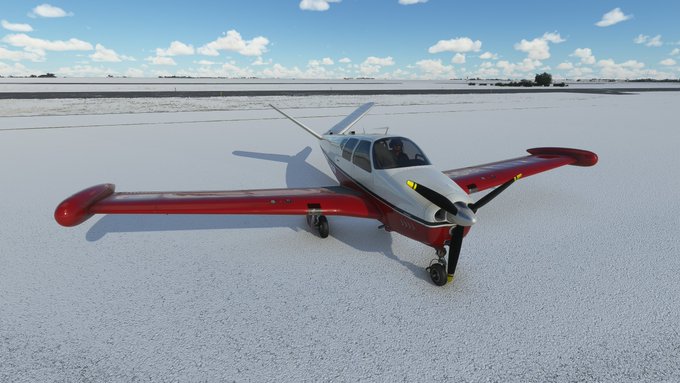
To improve stability, Fouga designers added a “keel” under the tail. This downward-facing vertical stabilizer also has a small tailwheel on it, which allows the pilot to pull the nose up after landing to help brake by increasing drag, without damaging the tail.

The CM.170 has two turbojet engines capable of producing 800 lbs. of thrust each, which is quite modest, even for its time. (In contrast, the twin engines of an F-22 Raptor today produce 35,000 lbs. of thrust each, with afterburners).

The engines are both placed very close to centerline, so if one fails, there is not much asymmetric thrust.

Inside the cockpit, I’m not 100% sure what the devices are, on either side, that look like desk lamps. I’m guessing they might be lights for the instrument panel at night, but if wrong let me know.

On the main instrument panel, on the top left is mach-meter, top right is the fuel gauge. Next row, left to right, is tachometer (engine RPM), airspeed, heading, attitude, acceleration. Below that is engine temp, altitude, vertical speed, turn indicator, radio direction finder.

On the throttle, there’s a button that pops open these speed brakes, on the upper and lower side of each wing, to help slow the aircraft down quickly.

Another view of the speed brakes deploys on either wing. Note that each wing has a teardrop-shaped tip-tank as a standard feature to carry additional fuel.

The CM.170 is designed primarily as a trainer, so has two seats. The instructor sits in the rear seat, but has an obstructed view. To solve this, the rear seat has a periscope to look up and over the front pilot.

Some points about the nose. The metal hoops are not antennae but handles to help crew maneuver the airplane on the ground. The glass tip of the nose isn’t a camera, it’s the landing light.

The Fouga Magister first flew in 1952 and is considered a later first-generation jet (2nd-generation generally had swept not straight wings).

It joined the French Air Force in its assigned training role in 1956, helping French pilots transition to the new age of jet combat aircraft.

Someone might want to correct my French, but on some further exploration, my understanding is that the more accurate translation of Magister is “schoolmaster”, which would be consistent with its training role.
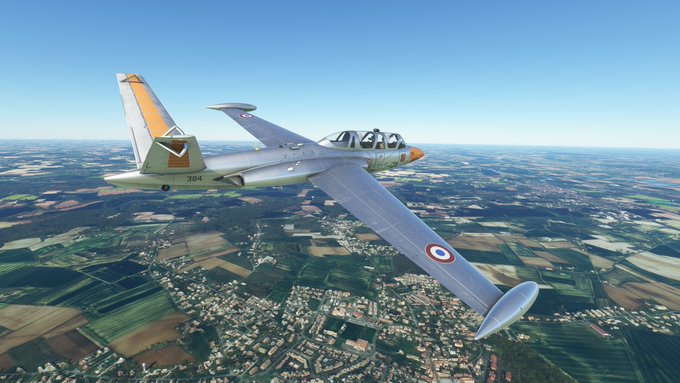
While not particularly powerful or fast, the Magister quickly gained a reputation as an elegant and well-behaved airplane, agile and easily controlled.

Its dual cockpit was pressurized and air conditioned, giving it a ceiling of 36,000 feet.

Its top speed is 386 knots (well below the speed of sound) and it has a range of 750 miles (2 hours and 40 minutes of flying) with external tip tanks.

We should take a moment here to enjoy the views of Toulouse, dubbed France’s “rose city” for its red brick architecture, situated along the Garonne River.

My family visited Toulouse (and its Airbus factory) this summer, and took the kids for ice cream in the central plaza below.

The city, which dates from Roman times, is the center of France’s air and space industry, in no small part due to founding companies like Fouga.

The CM.170 can take off from a runway as short as 3,050 feet (930 meters), and can land on unimproved grass runways. Of course, that won’t be an issue here at Toulouse.

Its stall speed is 78 knots with full flaps, hence a recommended approach speed of 110 knots or so. You can lower landing gear below 215 knots.

I can only imagine that, after spending their careers flying tailwheel high-powered piston planes with crazy torque, landing on a tricycle gear jet must have been a dream for pilots in the 1950s.

From the very start, France treated the Fouga Magister as a major export opportunity. In the 1950s, lots of countries in Europe and elsewhere were eager to train their pilots to enter the new jet era.

West Germany placed an initial order for 62 Magisters directly from Fouga.

I’m here at Landsberg-Lech Air Base in Bavaria, where this particular plane (AA-134) once flew. Landsberg served as a major center for retraining the Luftwaffe after West Germany joined NATO in 1955.

Of course, the Germans weren’t complete newcomers to jets, after producing the first jet fighters near the end of World War II.

As a result, a consortium Heinkel and Messerschmitt was given a license to manufacture a further 188 Magisters in West Germany itself.

The French produced 576 Magisters themselves, both for their own air force and for export. Production in France halted in 1962, but licensed manufacture abroad continued for several more years.

The Magister became the backbone for many air forces adapting to the jet age. This airplane was one of 18 ordered by Austria to train its forces.

The agility and ease of control of the Fouga Magister made it a favorite among aerobatics teams, such as the Belgian Air Force’s “Red Devils”.

Just enjoying a few wild and crazy moves over their home base of Beauvechain, southeast of Brussels.

In MSFS 2020, it actually gives you the ability to trail colored smoke in the Fouga Magister, for aerobatic displays.

The Belgian Red Devils started flying Magisters in 1965, and continued until the oil crisis of the 1970s led to drastic cutbacks.

France, Brazil, and several other countries similarly adopted Magisters for their national aerobatic display teams, for many years. They’ve all been replaced by newer planes now.

While mainly designed and used as a trainer, the Fouga Magister could be armed for combat. The French found them useful in strafing insurgent positions during the Algerian war for independence. And the Algerians admired them so much, they bought several after they won.

In addition to hard points on the wings for attaching bombs and rockets, the Magister could be equipped with twin 7.5mm or 7.62mm machine guns in the nose.

This particular aircraft, used by separatist forces in Katanga (a breakaway region in southern Zaire/Congo), has an especially interesting story.

In 1960, a few weeks after the Belgian-ruled Congo became independent, the mineral-rich southern region of Katanga (green), backed by Belgian mining interests, launched a revolt to break away as a separate country.

Feeling snubbed by the West, Congo’s first Prime Minister, Patrice Lumumba, turned to the Soviets for support. A coup led by Mobutu overthrew Lumumba and turned him over to the Katanga separatists, who executed him.
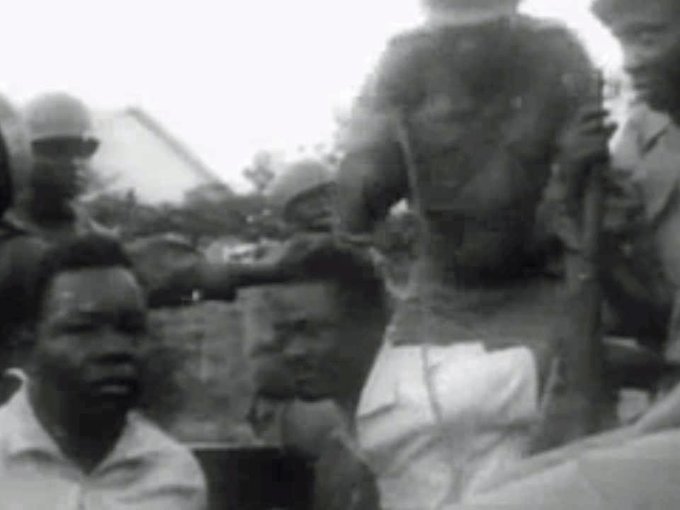
In support of the Katanga rebels, the CIA arranged to supply them with an odd assortment of planes to form an impromptu “air force”. The prize of the bunch: nine Fouga Magisters set aside from a Belgian order, to serve as ground attack aircraft.
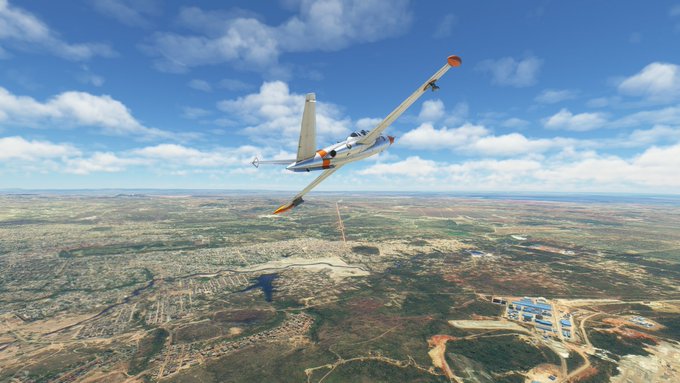
Only three of the Magisters were delivered to Katanga, however, in February 1961. They were flown into combat by foreign mercenary pilots.

Meanwhile, the United Nations intervened by sending peacekeeping troops into the Congo, to suppress the separatists, including foreign mercenaries, in Katanga.

Among them was a small 155-man unit of Irish soldiers posted to mining town of Jadotville, now Likasi, which I’m flying over here.

The Irish troops established along the main road south of the golf course, immediately below me. (I was able to piece this together from various maps, then and now).
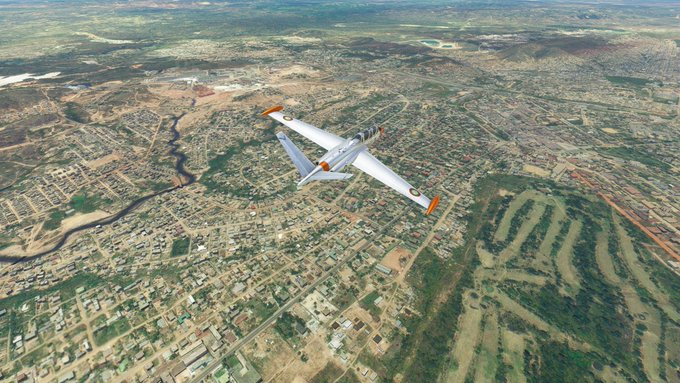
In September 1961, they were surrounded and came under attack from a 3,000-man force of Katangese forces. They held out for five days while a UN relief force of Irish, Indian, and Swedish troops tried to reach them.

During this time, the besieged Irish troops came under aerial attack from the Fouga Magisters owned by the Katanga air force.

Despite suffering no casualties, the Irish UN troops were eventually forced to surrender after they ran out of ammunition. They were held as POWs for a month.

The day after the Irish troops surrendered, a DC-6 carrying UN Secretary General Dag Hammarskjöld, coming to deal with the crisis on the ground, crashed in the region and he was killed.

Rumors abounded that his plane was in fact shot down by one of the Fouga Magisters flown by mercenary pilots for the Katanga rebels. These suspicions, however, were never confirmed.

The story of the “Siege of Jadotville” and Hammerskjold’s death is told in the Netflix film of the same name. Note that in the film, they were accurate enough to portray an actual Fouga Magister (instead of some other random type of plane) attacking the compound.
The story of the Katanga Magisters doesn’t end there, however. The separatists were eventually defeated, and two of the three Fougas were seized by the Irish and brought back home to Ireland.

There they were refurbished and joined four more Magisters purchased second-hand from Austria, to become part of the Irish Air Corps.

All six were based here, at Casement Air Base just southwest of Dublin, where they formed a Light Strike Squadron.

Four of them also participated in Ireland’s “Silver Swallow” national aerobatics display team.

The Irish Air Corps started flying the Fouga Magister in 1975. The Silver Swallows flew them from 1982 to when they were finally retired in 1998.

Israel started flying Fougas in 1957 and shortly later local license-manufacturing was started by IAI, with the aircraft named the Tzukit.
The Israeli Air Force used the Tzukit for primary and advanced training through the 1980s. Overall, 36 were produced in Israel and another 8 were purchased from abroad.

During the 1967 Six Day War, Israel’s Magisters were assigned to a reserve squadron which was used to provide close air support during initial attacks against Egyptian forces in the Sinai.

The Magisters were used to hit Egyptian ground forces while more advanced combat aircraft were used to target Egyptian air bases.

After Israeli forces successfully seized the Sinai, the Magisters were shifted to the West Bank, where they confronted advancing Jordanian forces.

The Fougas reportedly destroyed over 50 tanks and over 70 other armored vehicles, helping in holding back the Jordanian advance towards Jerusalem.

Seven Magisters and six pilots were lost in combat during the Six Day War, but they played a key ground support role in Israel’s campaign in and around Jerusalem.

The small Central American country of El Salvador acquired nine former Israeli Magisters and three from France for its air force in the 1970s.

They were used both as trainers and to strafe and bomb guerillas during that country’s civil war against Communist insurgents.

Morocco also used Magisters against insurgents in the Western Sahara. In Southeast Asia, the Royal Cambodian Air Force’s training Magisters were captured and used by the Khmer Rouge in their air force.
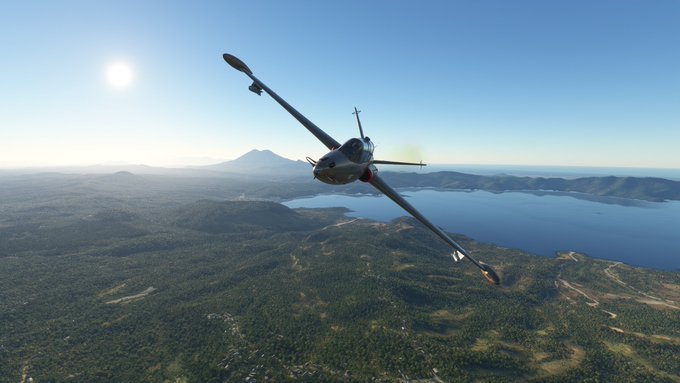
By the 1970s and ’80s, Magisters became a popular choice for African countries that were unable to afford more expensive, modern aircraft.

Here I’m flying a Senegalese Magister over downtown Dakar, after taking off from their main air force base at the older Léopold Sédar Senghor airport.
Other countries that flew the Magister include Algeria, Cameroon, Gabon, and Uganda.

The Fouga Magister was attractive to these countries because it could be easily swapped between training and low-intensity combat roles. Even for these countries, though, the Magister has since been replaced by more modern aircraft.
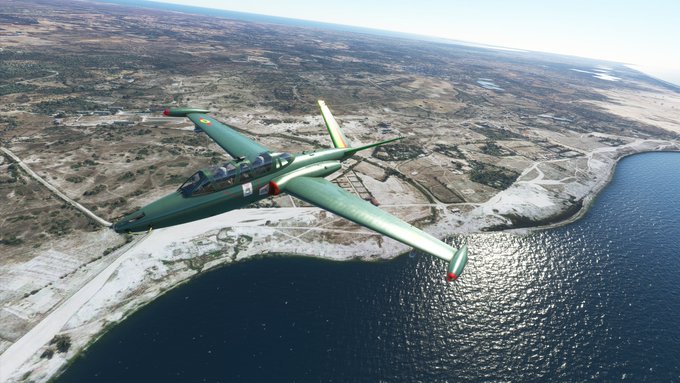
One of the last Western countries to fly the Magister was Finland.

I’m flying here over the lake district around Jyväskylä, site of Finland’s main training airbase.

Starting in 1958, Finland acquired 18 Magisters from France. The Finnish manufacturer Valmet then acquired a license to produce 62 more in Finland.

The Magister was attractive to Finland because its number of combat aircraft was limited by a treaty with the Soviet Union, but these trainers could be swapped into a combat role in an emergency.

Finnish pilots nicknamed the Fouga Magister the “Kukkopilli”, because the noise of the jet turbines reminded them of the sound of this traditional variant of flute.
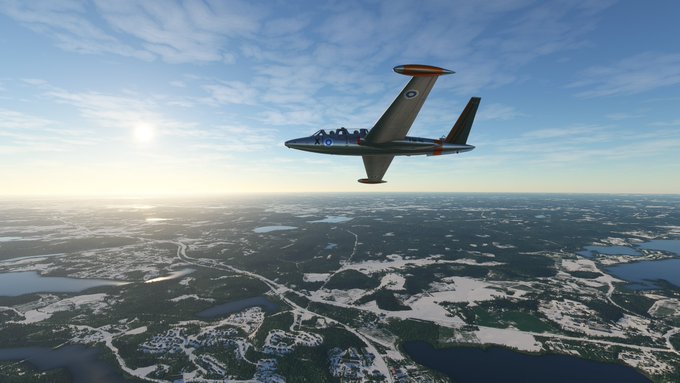
Finland continued flying the Magister as its main trainer until 1988, when it was superseded by the BAe Hawk.
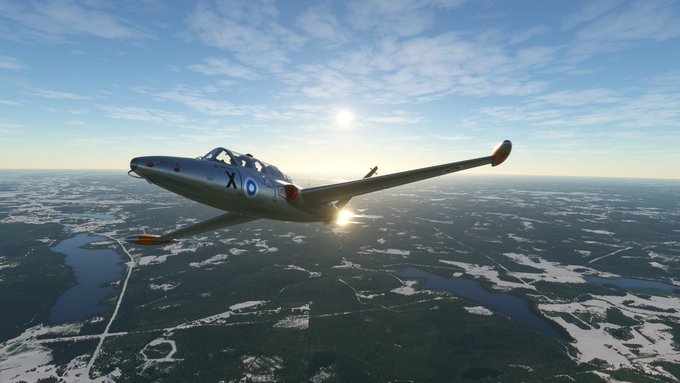
Today the Fouga CM.170 Magister is retired from military service around the world, but is still flown by private owners who find its elegant appearance, agility, and ease of control has an enduring appeal.

Thanks for joining me to learn about the Fouga CM.170 Magister, the “schoolmaster” that ended up being a lot more than a trainer, and brought many countries’ air forces into the new jet age.

Leave a Reply